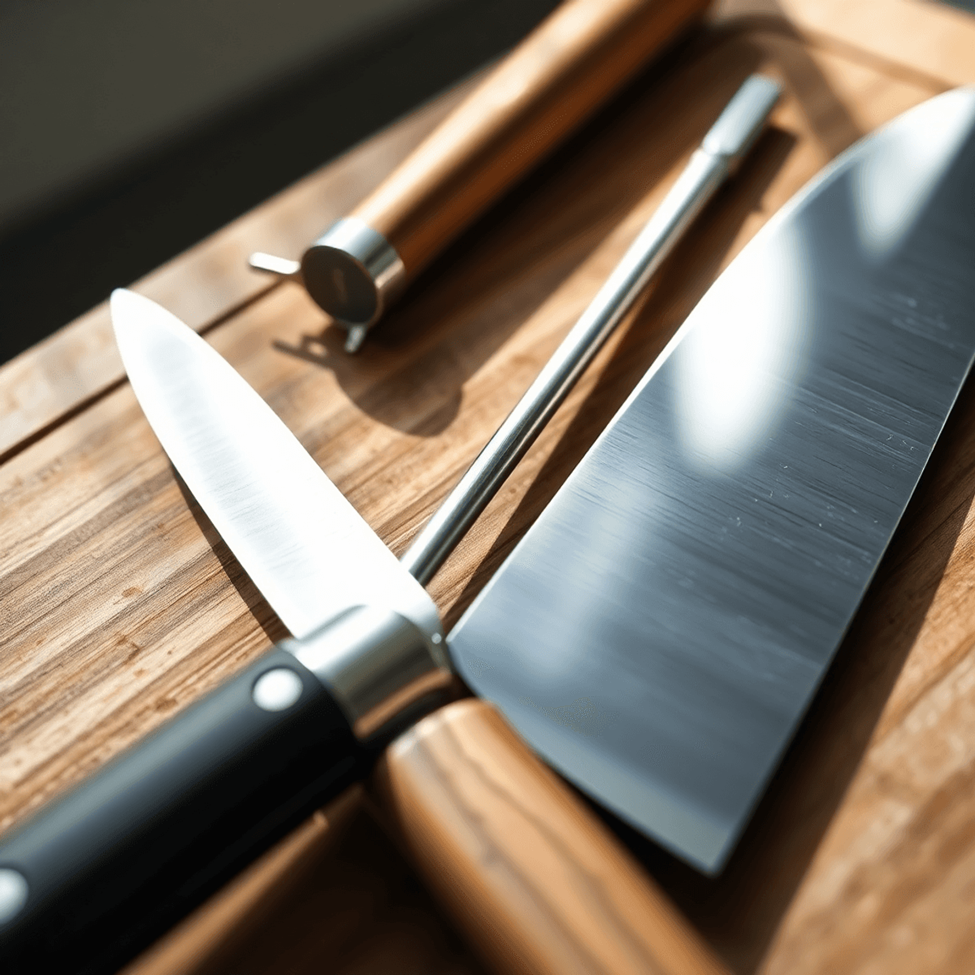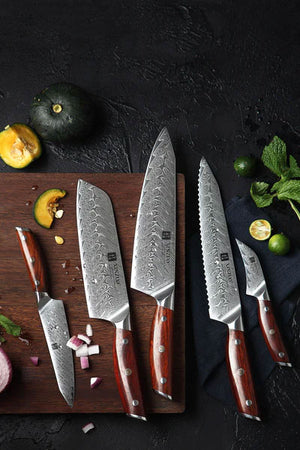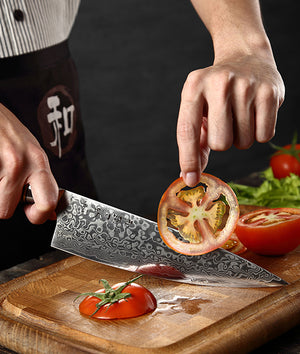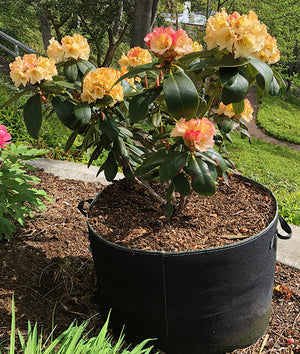
How to Hone a Knife: Tips for Beginners Using a Honing Rod
A well-maintained knife is a chef's best friend. Whether you're a home cook or professional chef, keeping your knives in prime condition ensures safer, more efficient food preparation. The secret to maintaining razor-sharp blades lies in regular honing.
Honing is a simple yet crucial skill that realigns your knife's edge, restoring its cutting performance between sharpening sessions. Using a honing rod – a long, slender tool made of steel or ceramic – you can maintain your knife's edge through a series of precise strokes.
In this guide, you'll discover:
- The essential differences between honing and sharpening
- How to select the perfect honing rod for your needs
- Step-by-step techniques for proper honing
- Tips for testing blade sharpness
- Best practices for honing frequency
- Proper storage methods for your tools
Master these fundamentals, and you'll extend the life of your knives while maintaining their peak performance. Let's dive into the art of knife honing.
Essential Knife Maintenance Tips
While honing is vital, it's not the only aspect of knife maintenance. Regular cleaning and conditioning of your kitchen tools are equally important. For instance, using Clark's Cutting Board Soap can help maintain your cutting boards by killing foodborne germs on wood surfaces without harmful chemicals.
Moreover, to keep your cutting boards in top shape, consider applying Clark's Coconut Cutting Board Oil. This highly refined coconut oil is food safe and designed specifically for cutting board care.
Additionally, don't forget about other kitchen tools like scissors. A multi-functional detachable stainless food cooking shear can be a game changer in your kitchen. You might want to explore options like these kitchen scissors that are perfect for various cooking tasks.
Understanding Honing vs. Sharpening
Many home cooks mistake honing for sharpening, yet these two processes serve distinct purposes in knife maintenance.
- Honing realigns the microscopic teeth along your knife's edge that bend and fold during regular use. Think of it as straightening a row of tiny soldiers back into formation. A honing rod doesn't remove metal from your blade - it simply pushes the edge back into proper alignment.
- Sharpening, in contrast, actually removes metal from your knife to create a new edge. This process is necessary when your blade becomes dull and honing no longer improves its performance.
Here's a quick comparison:
Honing
- Realigns existing edge
- No metal removal
- Can be done daily
- Uses a honing steel or ceramic rod
Sharpening
- Creates new edge
- Removes blade material
- Done 2-3 times per year
- Uses whetstones or mechanical sharpeners
Regular honing maintains your knife's peak performance between sharpenings. A well-honed knife:
- Cuts with less force
- Creates cleaner cuts
- Reduces the risk of accidents
- Extends time between sharpenings
Professional chefs hone their knives before each use - this practice keeps the blade's edge properly aligned and ready for precise cuts. The small investment of time in honing pays off through improved cutting performance and extended knife life.
To achieve optimal results, having the right tools is essential. For instance, a high-quality carving knife like the Xinzuo B9 Yun Series can make a significant difference in your cooking experience. This knife is not only versatile for poultry and roasts but also excellent for thin slices of larger cuts of meat.
Similarly, incorporating a bread knife into your kitchen set can simplify slicing through thick crusts and delicate pastries without crushing them. Its utility extends to cakes, soft fruits, and some meats as well.
Lastly, having a specialized meat slicing carving knife can make heavy-duty tasks much easier. Such comprehensive knife sets not only enhance your culinary skills but also highlight the importance of proper maintenance through honing and sharpening.
Choosing the Right Honing Rod
A proper honing rod selection significantly influences your knife maintenance success. The ideal length of your honing rod should be at least 2 inches longer than your largest knife blade - this ensures complete coverage during the honing motion.
Material Options:
- Steel Rods: Traditional choice, suitable for most Western-style knives like the Xinzuo B37S carving knife available at The Bamboo Guy.
- Ceramic Rods: Gentler on blade edges, ideal for Japanese knives
- Diamond-coated Rods: Aggressive material, best left to professionals
Benefits of Ceramic Honing Rods:
- Removes less metal during honing
- Creates smoother edge finish
- Harder surface than steel
- Less maintenance required
- Suitable for high-hardness knife steels
Quality Features to Look For:
- Sturdy handle with secure grip
- Balanced weight distribution
- Safety guard between handle and rod
- Non-slip base for vertical honing
- Uniform surface texture
The rod's diameter matters - thicker rods (12mm) work better for heavy-duty knives, while thinner ones (10mm) suit precision blades. A magnetic base adds stability when storing your rod vertically, protecting both the rod and surrounding items from damage.
High-quality honing rods often come with protective cases, extending their lifespan by preventing dust accumulation and surface damage during storage. The surface texture should feel consistently smooth, without visible scratches or irregularities that could damage your knife's edge.
When it comes to heavy-duty knives, a Xinzou B37S bread knife, also available at The Bamboo Guy, is an excellent choice. Its composite stainless steel construction and sturdy Pakka wood handle promise lasting durability.
Proper Technique for Honing a Knife
Mastering the correct honing technique starts with understanding the appropriate angle for your specific knife type. German-style knives typically require a 20-degree angle on each side, while Japanese knives, like the ones from Xinxuo, need a more acute 15-degree angle for optimal results.
Step-by-Step Honing Process
1. Secure Your Position
- Plant your feet shoulder-width apart
- Hold the honing rod vertically, tip down on a stable surface
- Keep your arm straight and firm
2. Find Your Angle
- For German knives (20°): Position the blade as if cutting a quarter of an imaginary pie
- For Japanese knives (15°): Adjust slightly closer to the rod
- Pro tip: Place a matchbook under the blade - the natural angle creates roughly 20 degrees
3. Execute the Motion
- Start with the heel of the blade near the top of the rod
- Draw the knife downward while pulling it toward you
- Maintain consistent pressure - just the weight of the blade is sufficient
- Complete the stroke at the tip of the knife
4. Alternate Sides
- Repeat the same motion on the opposite side
- Maintain the same angle and pressure
- Create a rhythmic pattern: right side, left side
- Perform 4-5 strokes per side
Common Mistakes to Avoid
- Applying excessive pressure
- Changing angles mid-stroke
- Moving too quickly
- Using jerky, uneven motions
- Starting with the blade tip instead of the heel
The key to successful honing lies in maintaining consistent angle and pressure throughout the process. Practice these movements slowly at first, focusing on smooth, controlled strokes. Your muscle memory will develop with regular practice, making the process more natural and effective.
If you're looking for high-quality knives to hone and maintain, consider exploring options like Hezhen PM8S Kitchen Chef Knife Set or Xinzuo Deba Professional Handmade Japanese Knife. These knives feature exceptional craftsmanship and are made from superior materials such as Damascus steel, perfect for making exceptional kitchen tools.
Testing Knife Sharpness After Honing
A properly honed knife, like the Xinzuo B32 Feng Paring Knife, should demonstrate noticeable improvement in cutting performance. Here are reliable methods to test your knife's sharpness:
-
Paper Test
- Hold a sheet of printer paper vertically by its edge
- Draw the blade across the paper's top edge at a slight angle
- A sharp knife will create a clean, smooth cut without catching or tearing
-
Tomato Test
- Place a ripe tomato on a cutting board
- Rest the blade gently on the tomato's surface
- Apply minimal downward pressure
- A sharp knife will slice through the skin without crushing the flesh
-
Visual Inspection
- Hold the blade under bright light
- Examine the edge for any reflected light
- A sharp edge appears as a clean, straight line
- Dull spots will show up as bright reflective areas
-
Fingernail Test (Use with caution)
- Rest the blade edge gently on your thumbnail
- The knife should "stick" slightly without sliding
- If the blade slides across easily, it needs additional honing
-
Professional Chef's Test
- Attempt to slice through an onion
- The knife should glide through with minimal resistance
- No dragging or sawing motion should be necessary
A well-honed knife requires minimal pressure to perform these tests. If you notice resistance or uneven cutting, repeat the honing process with careful attention to maintaining consistent angle and pressure. Utilizing high-quality tools and products, such as Clark's Buffing Pads, can significantly enhance your honing process and overall knife maintenance.
Frequency of Honing Your Knife
Professional chefs hone their knives before each use - a practice worth adopting for home cooks. The frequency of honing depends on several factors:
Regular Home Cooking
- Hone before each major cooking session
- Additional honing after cutting tough ingredients
- Weekly honing for occasionally used knives
Heavy Kitchen Use
- 2-3 times per day for professional kitchens
- Mid-shift honing during intensive prep work
- Post-service maintenance for busy periods
Signs Your Knife Needs Honing
- Difficulty making clean cuts through vegetables
- Meat tearing instead of slicing smoothly
- Resistance when cutting soft ingredients
The key is establishing a consistent honing routine that matches your cooking habits. Regular maintenance prevents the need for frequent sharpening and extends your knife's performance between professional sharpenings.
In addition to honing your knife, it's important to remember that maintaining your kitchen tools and environment is equally essential. For instance, if you have a garden or lawn that requires regular watering, you might want to consider using an Orbit Programmable Hose Faucet Timer. This timer allows you to set specific watering frequencies, ensuring your plants receive the right amount of water without the need for constant manual intervention.
Storage and Accessibility of Your Honing Rod
Proper storage extends the life of your honing rod while keeping your kitchen safe. Mount a magnetic knife strip on your kitchen wall to store the rod vertically - this prevents accidental drops and keeps it within arm's reach during food preparation.
Alternative storage options include:
- Dedicated knife block slots designed for honing rods
- Protective plastic caps on both ends when storing in drawers
- Wall-mounted hooks or specialized rod holders
- Original packaging boxes with protective sleeves
Safety tip: Never store your honing rod loose in kitchen drawers - the metal can damage other utensils and create safety hazards. Keep it elevated and separate from other kitchen tools.
A clean, dry environment prevents rust formation on steel rods. For ceramic rods, avoid high-humidity areas that could compromise the material's integrity.
If you're looking for an innovative storage solution, consider using non-woven grow bags which can provide a safe and breathable environment for your honing rod while also being useful for your gardening needs.
Conclusion
Mastering the art of knife honing transforms your kitchen experience. Regular practice builds muscle memory, refines technique, and extends the life of your knives. Start with gentle strokes, maintain consistent angles, and watch your skills improve with each session.
Remember:
- A well-maintained knife is a safer knife
- Daily honing keeps your blades performing at their best
- Proper technique matters more than speed
Make honing part of your kitchen routine - your knives will reward you with precise cuts, better control, and years of reliable service. Pick up that honing rod and start practicing today - your future self will thank you for developing this essential culinary skill.



